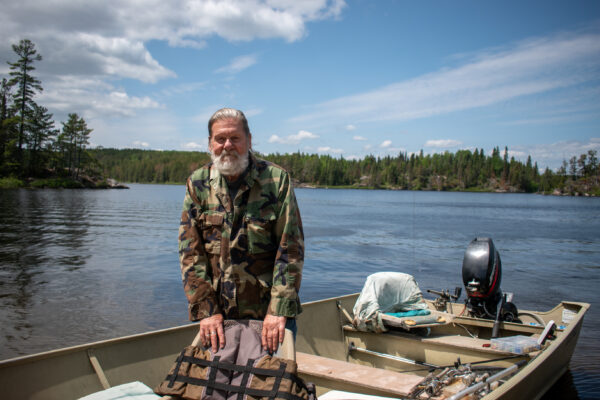Deer harvest numbers down 55 percent in northeastern Minnesota
It’s no secret that white-tail deer populations have declined in the northeast region of Minnesota in the past decade.
While long-time residents and visitors have noticed a decrease in deer observations while driving along Highway 61 and in the Superior Uplands – Arrowhead region, a valuable indicator of how deer populations are fairing is the annual deer hunting season.
And the 2022 season was bleak.
Nancy Hansen, area wildlife manager with the Minnesota Department of Natural Resources, said the DNR relies on the deer hunting season as an indicator for assessing population numbers and setting population goals for the following season.
Following continued low deer populations, the DNR scaled back antlerless lottery permits for the 2022 season. The number of antlerless lottery permits dropped considerably in the deer permit area (DPA) 126, which encompasses most of Cook County. In 2021, the DNR allowed 100 antlerless lottery permits. This year, only 25 were allowed.
With the reduction of antlerless lottery permits in multiple DPAs in the northeast region, Hansen said the DNR “did expect the harvest to be lower this year.”
However, looking at the harvest data following the firearm deer season, which wrapped up on Nov. 20, the numbers are considerably lower than anticipated for multiple DPAs in the Superior Uplands – Arrowhead region.
The Superior Uplands – Arrowhead region, which encompasses Cook and Lake counties, is broken into six DPAs: 117, 118, 126, 130, 131, and 133.
While DPAs 117, 118, 130, and 133 saw a 15% to 36% decrease in harvest numbers, DPA 126 in Cook County experienced a 55% decrease between the 2021 and 2022 seasons.
“That’s pretty significant for 126,” Hansen said.
Nearby DPA 131 had a similar experience. The permit area saw a 51% decrease between the 2021 and 2022 seasons.
Hansen said that in addition to low deer populations and the reduction of antlerless lottery permits, other factors could have contributed to low harvest numbers this year.
“It depends too on hunter effort,” Hansen said.
Deer hunters encountered rain and snowstorm conditions during the majority of the firearm season, which may have contributed to low harvest numbers.
However, despite the poor weather conditions, multiple deer hunters that WTIP spoke with following the firearm season, including the author, continued hunting.
While the season for muzzleloader and archery remains open well into December, the deer harvest numbers for the Superior Uplands – Arrowhead region are not expected to change significantly.
Hansen said once the season ends on Dec. 31, the DNR will look at the final tally and adjust for the 2023 season. She added the DNR would likely scale back antlerless lottery permits again next year.
While the DNR continues to scale back each year as deer populations decline in the northeast region, there are no signs of recovery or stabilization anytime soon.
The DNR states that severe winters, wolf predation, and limited winter habitat have contributed to declines in deer numbers in the Superior Uplands – Arrowhead region.
With the potential for more severe winters, a growing wolf population, and limited winter habitat, the outlook for sustaining white-tail deer in northeastern Minnesota is disheartening for many.
Deer harvest data dating back to 2012 provided on the DNR website shows a distinct downward trend in population numbers. Data shows that harvest numbers for DPAs 126, 117, and 118 have decreased by 50% to 88% in the last ten years. In 2012, there were 753 deer harvested in DPA 126. Currently, in the 2022 season, there are only 90 harvested.
Deer hunter participation and license sales have remained relatively stable throughout the past ten years. While total statewide license sales dropped considerably between 2014-2016, license sales are on the rebound and increasing.
In 2021, total license sales in Minnesota were 17,791 higher than ten years earlier.
As the DNR combs through the data and sets deer population goals for the 2023 hunting season, hunters in the northeast region should expect another year of reduced antlerless lottery permits and fewer deer on the landscape.
As deer populations continue to decrease and fade from the Superior Uplands – Arrowhead region, it’s only a matter of time before the deep-rooted deer hunting traditions of many along the North Shore will too.
WTIP’s Kalli Hawkins spoke with Nancy Hansen, area wildlife manager with the Minnesota DNR in Two Harbors about the low deer hunting harvest numbers. Audio from the interview is below.














